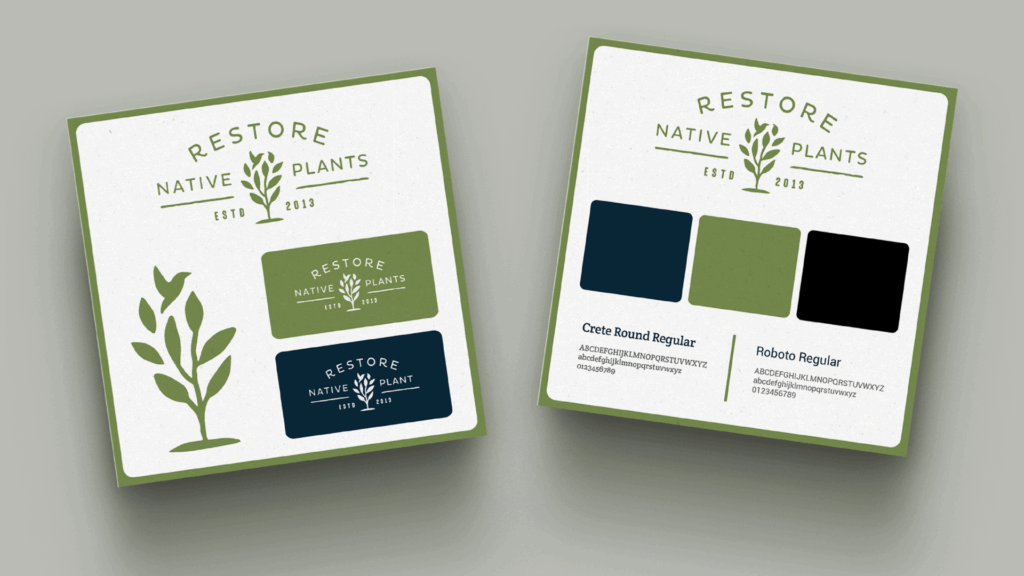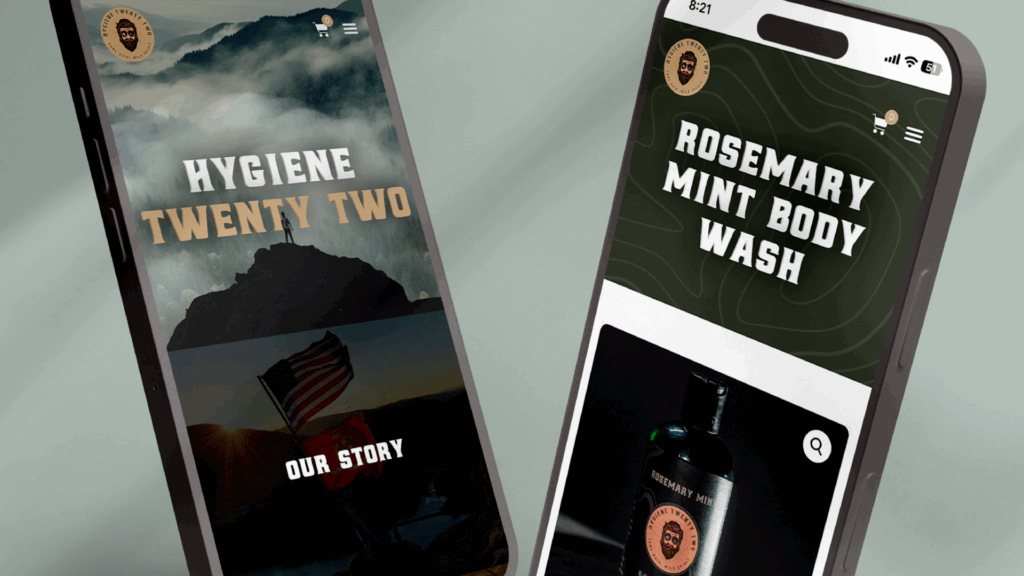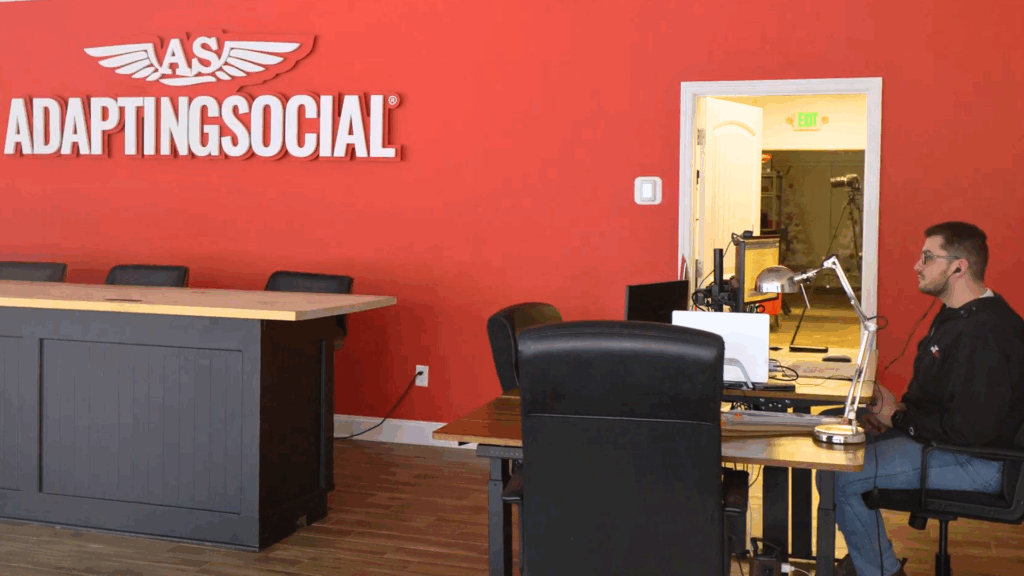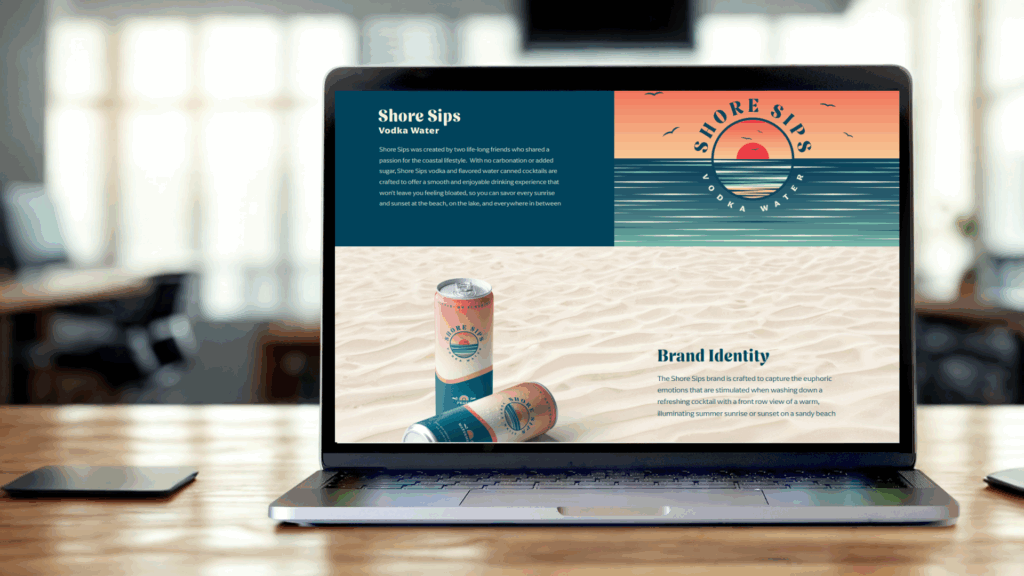Imagine walking into a store for the first time. You haven’t spoken to a staff member, but something about the colors, the signage, the tone of messaging on the walls — it all clicks. You instantly know what kind of business this is, what they stand for, and whether it resonates with you. That feeling? That’s brand identity at work.
For many small businesses, branding gets pushed to the bottom of the to-do list. There’s pressure to focus on sales, operations, and daily survival. But without a clear and consistent brand identity, even the best products and services can struggle to gain traction. Brand identity isn’t just how your business looks — it’s how it’s remembered. It’s the impression people carry long after their first visit, and it has a direct impact on whether they choose you again.
What Is Brand Identity?
Brand identity is the combination of visual elements, messaging, and emotional cues that shape how people perceive your business. It’s everything from your logo and colors to the way you write a social media caption or answer customer emails. It’s not a single item — it’s the full picture that helps someone recognize, understand, and remember your business.
It’s important not to confuse brand identity with branding or brand image. Branding is the process of shaping that identity — making deliberate decisions about how your business is presented. Brand image is the perception people actually have of your business in the real world. Brand identity is what you create to influence that perception.
It’s your way of saying, “This is who we are, and this is what we stand for,” even before a customer interacts with your product or service.
Why Brand Identity Matters
When people hear your business name or see your logo, they form an opinion in seconds. That opinion isn’t based on a detailed analysis — it’s emotional, instinctive, and often lasting. A strong brand identity gives you control over that first impression. It shapes how your business is perceived and sets expectations for the experience customers will have.
For small businesses, this can be a difference-maker. Many operate in competitive markets where price, product, and convenience aren’t enough to stand out. Brand identity gives you something more durable: a personality, a voice, a look — and most importantly, a reason for customers to connect with you. People tend to buy from businesses they feel aligned with, and identity is what forges that connection.
It also builds recognition. Think about the businesses you trust — chances are, their branding is consistent across their website, storefront, social media, packaging, and more. That consistency helps them stay top of mind. For smaller operations, that kind of recognition creates momentum. It helps generate repeat business, word-of-mouth referrals, and a sense of credibility that makes potential customers more comfortable saying yes.
And it doesn’t just influence how customers see you — it also impacts how your team sees the business. A clear brand identity gives internal teams direction. It becomes a reference point for design choices, communication tone, and even hiring. When everyone’s aligned on what the brand stands for, it’s easier to make decisions that support growth.

We developed Restore’s brand guide, laying the foundation for their visual identity and messaging.
Elements of a Brand Identity
A complete brand identity is made up of both visual and non-visual components. These elements work together to create a consistent and memorable experience, whether someone is walking into your store, scrolling through your Instagram feed, or receiving an email from your business.
Here are the building blocks of a brand identity:
1. Business Name
This is often the first thing people hear or see. A name should reflect your values, tone, and what you do — all while being simple enough to remember.
2. Logo
Your logo acts as a symbol for your brand. You should create a logo that is versatile (works in color or black and white), scalable (looks good on a business card or billboard), and aligned with your overall brand personality.
3. Color Palette
Colors trigger emotion. Choosing the right color scheme helps create consistency across everything from your website to your packaging. It also plays a big role in recognition.
4. Typography
Fonts communicate tone. A sleek, modern font says something very different than a classic serif or a playful script. Your typography should be readable and consistent across platforms.
5. Imagery and Design Style
This includes photos, graphics, iconography, and even textures. Visuals help communicate your brand mood and message quickly, especially online where attention spans are short.
6. Voice and Tone
The way your business “speaks” in writing — from taglines to customer service emails — is part of your identity. Is your voice casual and conversational, or more formal and informative? Consistency in tone helps build trust.
7. Tagline or Slogan
A concise phrase that sums up your business promise or positioning. A good tagline sticks and gives people an easy way to describe what you’re about.
8. Brand Values and Personality
While less visible, these shape everything else. Are you adventurous and bold? Reliable and thoughtful? These traits guide how you present yourself and connect with your audience.
Each of these elements should work in harmony. If your logo says “bold and innovative” but your copy feels rigid and technical, customers may feel a disconnect. That’s why developing a cohesive brand identity is less about checking boxes — and more about aligning all the moving parts.

We delivered a complete brand visual package: logo, packaging, and social media content.
How to Develop Your Brand Identity: Step-by-Step
Creating a brand identity isn’t about picking a logo and calling it a day. It’s about building a complete system that reflects your values, speaks to your audience, and works consistently across every platform and touchpoint. Here’s a step-by-step breakdown to guide the process:
Step 1: Understand Your Audience
Everything starts here. You can’t build a brand that connects unless you know who you’re speaking to. What do your customers care about? What problems are they trying to solve? What other brands are they drawn to, and why? Create profiles — even simple ones — that capture demographics, behaviors, and motivations. This will guide every decision you make.
Step 2: Clarify Your Brand’s Mission, Values, and Personality
What does your business stand for? What do you want people to feel when they engage with you? This isn’t about buzzwords. It’s about being clear and specific. For example:
- Mission: What do you aim to do for your customers?
- Values: What principles guide your business?
- Personality: If your brand were a person, how would it act or speak?
This foundation shapes not only your messaging, but also your visuals and customer experience.
Step 3: Research Your Competitors
Look at other businesses in your space — not to copy, but to differentiate. Pay attention to how they position themselves, how their branding feels, and what seems to resonate with customers. The goal is to carve out your own lane and avoid blending into the background.
Step 4: Design the Visual Identity
Once you’ve established the strategy behind your brand, it’s time to translate it into visuals. This includes:
- Logo design
- Color palette selection
- Typography choices
- Image and design style guidelines
These should work well across digital and physical platforms. If you’re not sure where to start, pick two or three colors that reflect your personality, choose one or two fonts that are easy to read, and make sure your logo holds up at any size.
Step 5: Define Your Voice and Messaging Style
How your brand talks matters just as much as how it looks. Define a consistent tone — whether that’s bold, friendly, authoritative, or something else — and use it everywhere: on your website, in your social posts, even in your customer service replies. Your messaging should reflect your personality and speak to your audience’s needs.
Want to dive deeper into how personality shapes your brand? Check out our post on The Power of Building Personality into Brands, where we break down why personality isn’t just a “nice to have” — it’s what turns businesses into household names.
Step 6: Build a Brand Style Guide
This is your blueprint for consistency. A good style guide outlines your visual elements (colors, fonts, logo usage), writing style, tone of voice, and more. It keeps everyone — from your internal team to freelancers — on the same page.
Step 7: Apply Your Identity Across All Touchpoints
Now it’s time to make it real. Update your website, social media profiles, signage, packaging, email templates — everything. Consistency builds recognition and trust, so even small details matter. Your Instagram bio and your business card should feel like they’re coming from the same place.
Step 8: Monitor and Adjust
Brand identity isn’t a one-time project. As your business grows, your audience may shift. Trends change. Platforms evolve. Check in regularly to make sure your identity still feels right and performs the way it should. Small updates — like refreshing your visuals or fine-tuning your tone — can keep your brand sharp without losing its essence.

Building a Brand Identity That Sticks
Your brand identity is more than colors and logos — it’s the entire way your business communicates who you are and why you matter. When it’s done right, it gives your customers something to remember, something to trust, and something to come back to. Whether you’re just starting out or looking to refresh how your brand presents itself, building a strong identity is one of the smartest long-term decisions you can make for your business.
If you’re not sure where to begin, or you want a second set of eyes on your branding, Adapting Social is here to help. We’ve helped thousands of businesses — from local shops to fast-growing brands — define how they show up in the world. Let’s build something your audience won’t forget.




